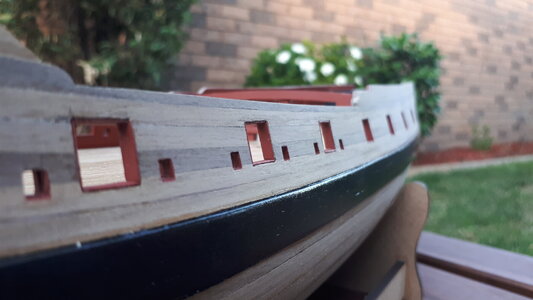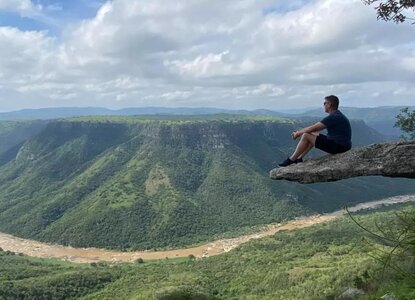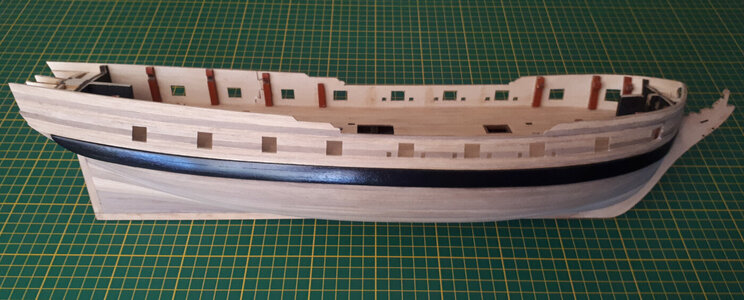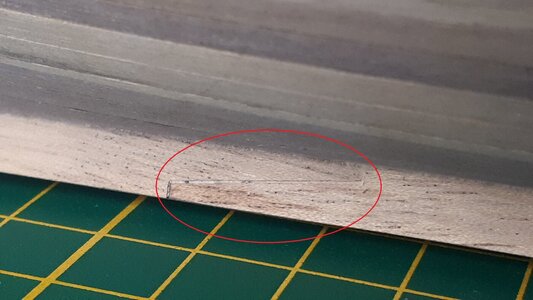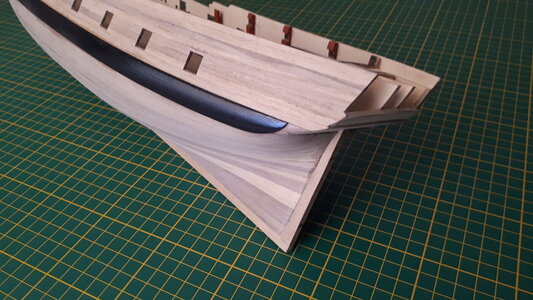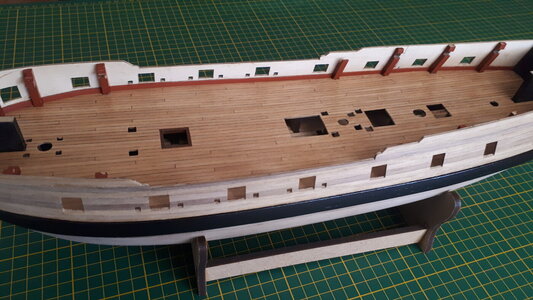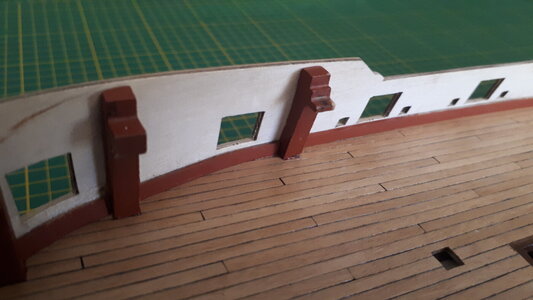There was more to the inner bulwark planking than met the eye. Well my eye at least. The first bit was relatively straightforward, especially in the waist, stacking the 'quickwork' planks between the oar and portholes towards the top edge of the bulwarks.

Then I had to decide how high up the bulwarks to plank. Most examples I saw only went as far as the upper deck beam supports, and continued again after the upper decks had been installed. I opted to complete all the inner bulwark planking up front, although this required the bulkhead extensions to be trimmed to deck level in order to lay uninterrupted planks along the stern and bow sections.
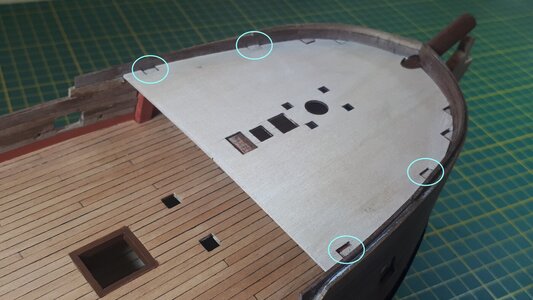
Also, the support beam that marks the edge of the quarterdeck needed to be installed prior to planking all the way to the top. This beam is different from the others in that it extends into the bulwark planking, and would be awkward to fit with the planking already in place. Not to mention the rear main mast bit assembly which sits directly beneath the support beam. This, in turn, needed to be fixed in position before the beam could be installed.
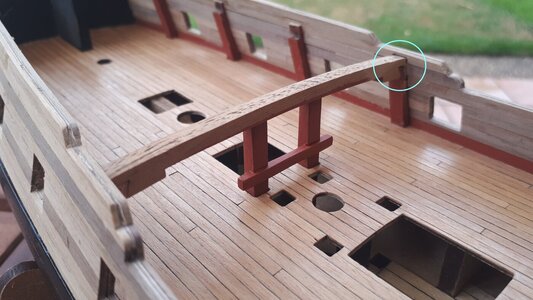
I couldn't think of any other deck parts that might be compromised by this process and continued planking to the top of the bulwarks, using a needle file to clean out and make as square as possible all of the oar and portholes.
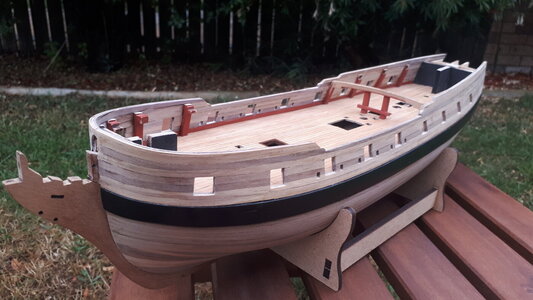
Painting the inner bulwarks in red ochre was a relatively straightforward process, but lining the gun ports was not. The instructions did not call for the explicit lining of the gun ports, but I did notice it in many of the
HMS Fly and
Pegasus builds and thought I'd give it a go using strips of the Tanganyika deck planking wood, sanded, and pre-painted in red ochre.
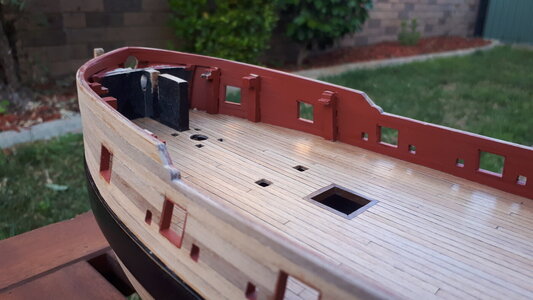
The gun port linings, I discovered, are only as good as the extent to which the gun ports are made square, and the edges of the lining invariably had to be cut at an angle to accommodate the shape of the gun port in an undulating bulwark. I don't think I got it exactly right but it was a bit of fun all the same

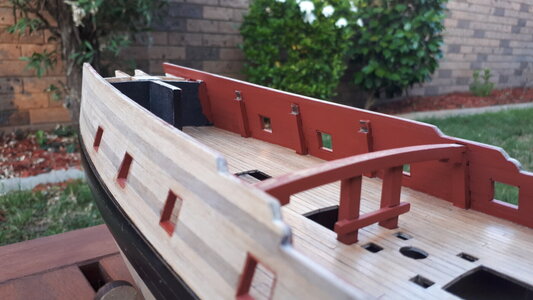
So that's the inner bulwark planking done and dusted. With the outer and inner planking now complete the hull as a whole feels far more a solid and robust than it did previously. I find it interesting that with each separate phase of building a model ship you tend to develop a system for the task at hand, especially repetitive tasks such as the lining of 18 gun ports. And just when you have it down pat, which in my case is when there are only two or three left to go, the phase ends and you move on to the next one, which again requires a whole new system and modus operandi. Wash, rinse, repeat...

